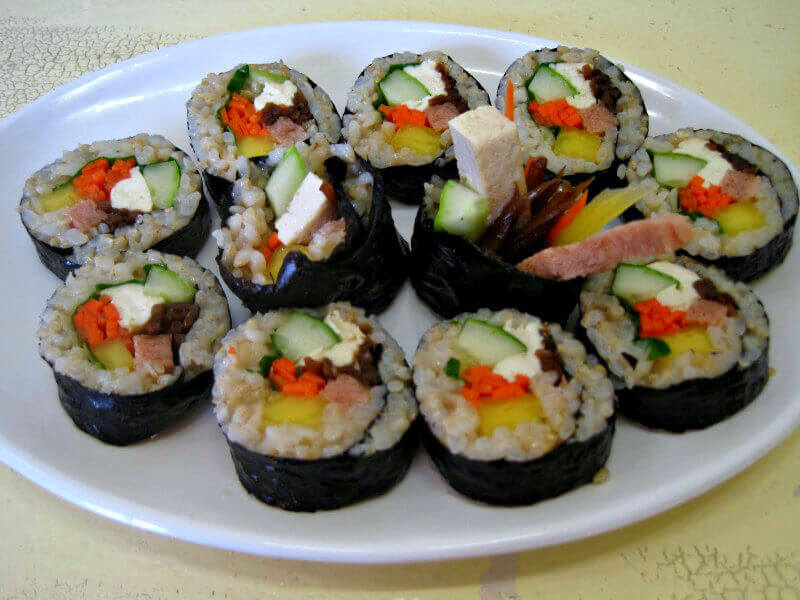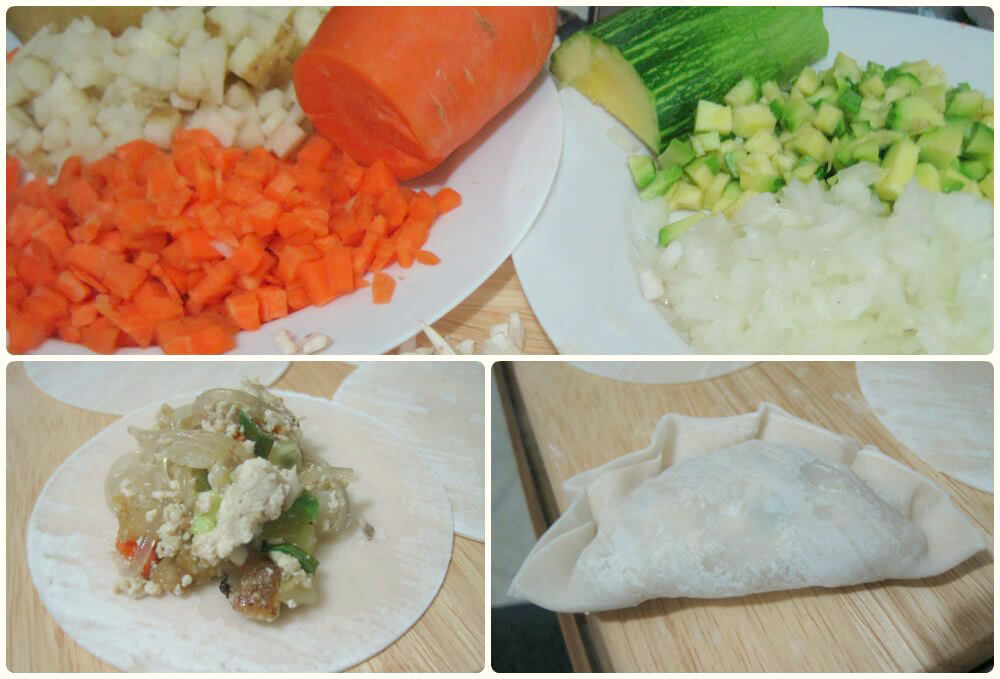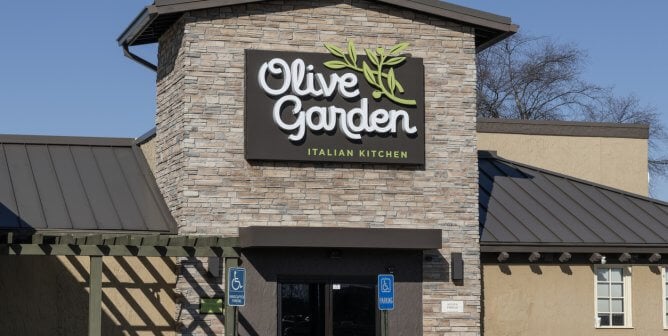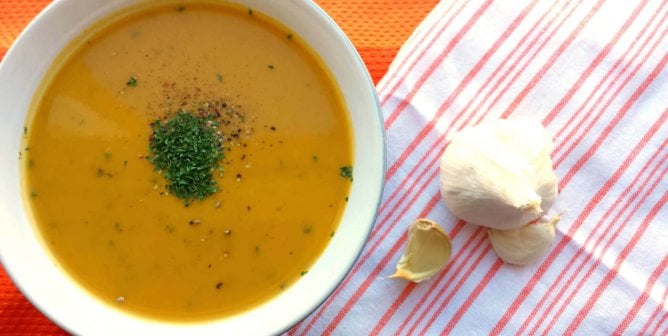After living in Korea for two years, I often find myself craving Korean cuisine, but some dishes are laden with anchovy paste, eggs, and pork. I set out to find the best recipes that will make you exclaim, “Mashita” (“It’s delicious!”), and, most importantly, don’t include animal products in the ingredients.
Kimbap (Veggie, Rice, and Seaweed Roll)
Sushi rice made for Japanese-style sushi rolls typically has rice vinegar and sugar mixed in. The rice in kimbap, however, is seasoned with sesame oil and salt for a different flavor. Kimbap can sometimes include processed cheese slices, tuna, beef, spam, or a strip of scrambled egg, but this vegan version will fill you up without harming animals.
Japchae (Korean Sweet Potato Noodles)
Japchae was a staple for me in Korea, easily made vegan by ordering it without pork. The chewy sweet potato noodles paired with mushrooms, carrots, and other veggies make a perfect side dish or main course.
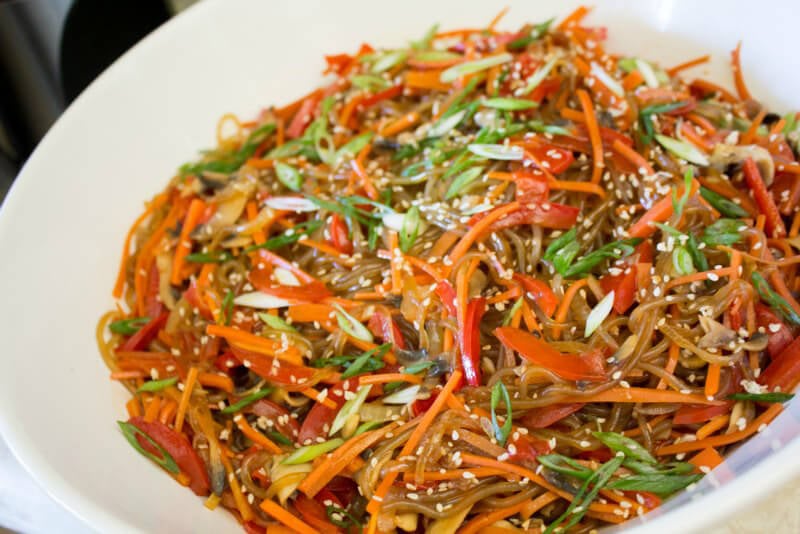
Pajeon (Green Onion Pancake)
I’ve seen pajeon made with eggs and cut-up squid, so I was excited to find this version. My favorite part is the savory dipping sauce.
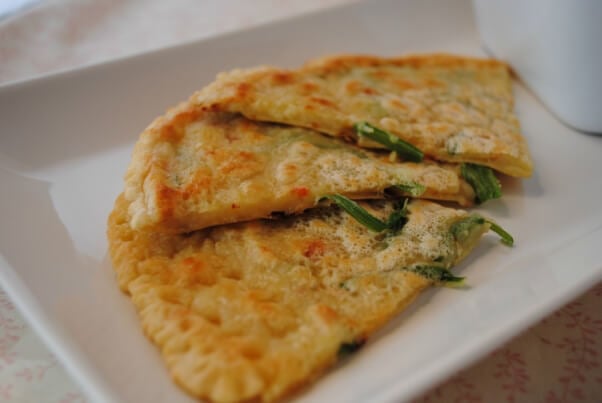
Vegan Bulgogi (Sweet Marinated Beef) Sandwich
Although I never really saw a “bulgogi sandwich” in Korea, this looked too delicious to pass up.
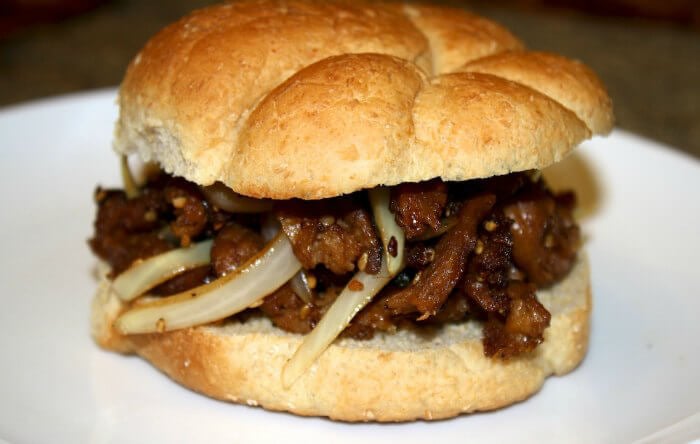
Bibimbap (Mixed Spicy Veggies and Rice)
This was another staple for me while living in Korea. Veggies, rice, and gochujang (red chili paste) make up the heart of this dish, and it can also be ordered in a hot stone bowl!
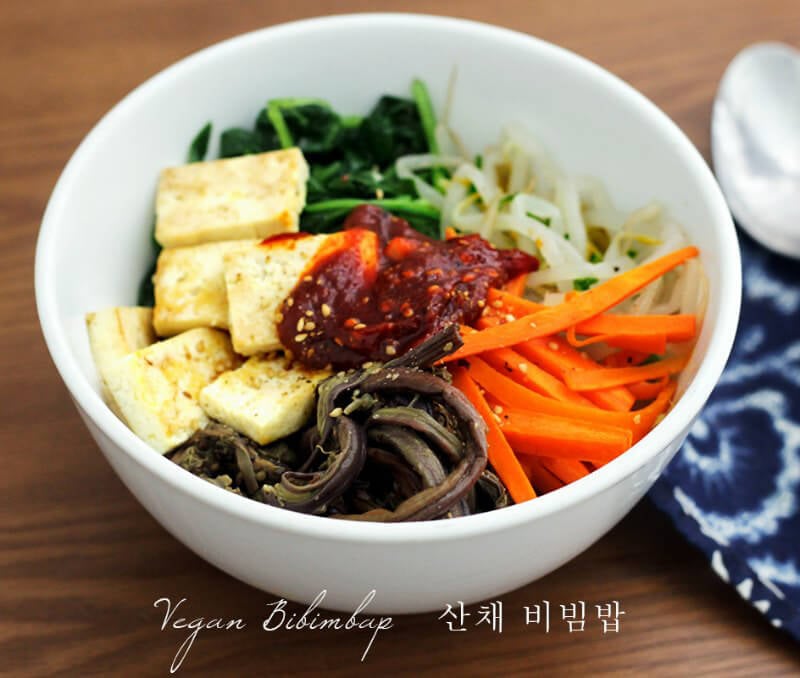
Joomuk-bap (Seasoned Rice Balls)
Literally translated as “fist rice,” these snacks are popular when packing a picnic lunch. The delicate spices and chopped veggies pair perfectly with the texture of the rice.
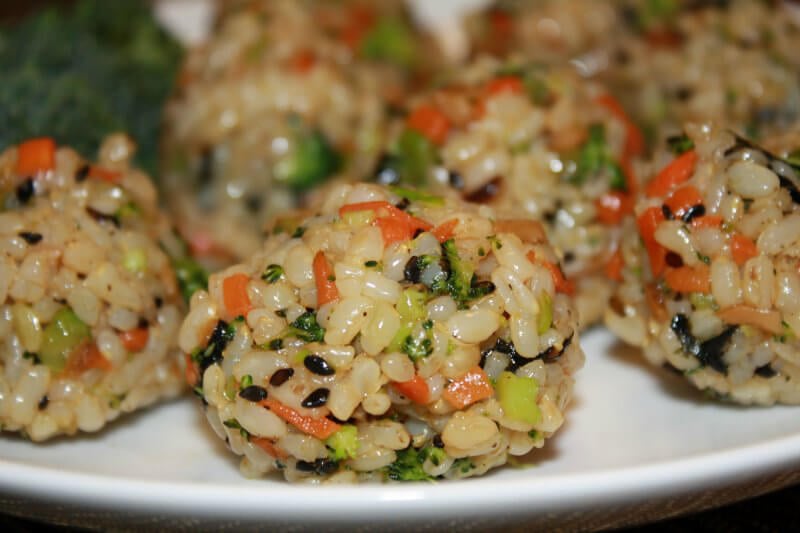
Mandu (Dumplings)
It was admittedly tough to find vegan dumplings in Korea, so I took to my kitchen to make my own version. The best part is that you can use anything you want as a filling, and you can fry them or steam them, so they’re very versatile.
Ramyeon (Korean Ramen Noodle Soup)
I quickly found out that many aspects of Korea’s cuisine have been influenced by neighboring countries China and Japan. You can find ramyeon on every street corner, but to ensure that it’s vegan, make your own!
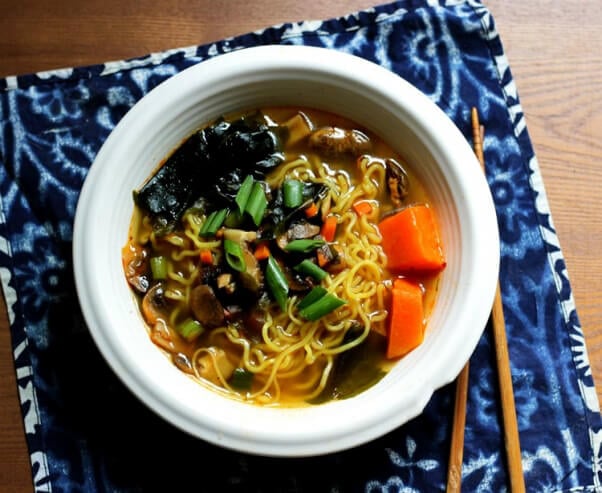
Pyogobusut-tangsoo (Sweet and Sour Shiitake Mushroom)
A dish taking inspiration from Chinese cuisine, pyogobusut-tangsoo is savory, sweet, sour, crunchy, and rich—it basically covers all the taste sensations.
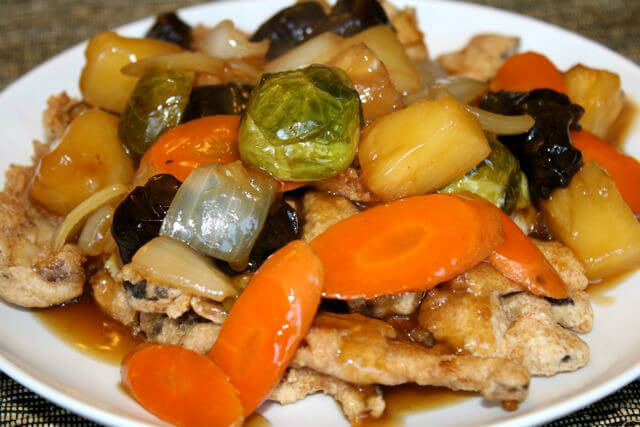
Ddeokbokki (Korean Spicy Rice Cakes)
The street food extraordinaire ddoekbokki is another one I had to try making at home to ensure that it was vegan (it’s typically made with “fish cakes,” i.e., hot dogs of the sea … blech!). This spicy dish has a texture unlike anything I’ve ever tried and was quite tasty. A popular option is to add a package of ramen noodles to kick things up a notch.
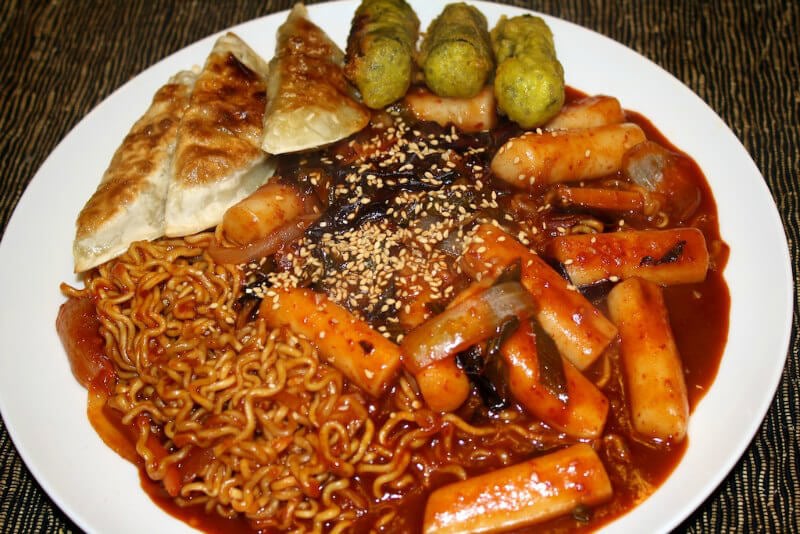
Hobak Juk (Pumpkin Porridge)
One of the best comfort foods I ate in Korea, hobak juk, is warm, sweet, and filling. Perfect for a cold winter day.
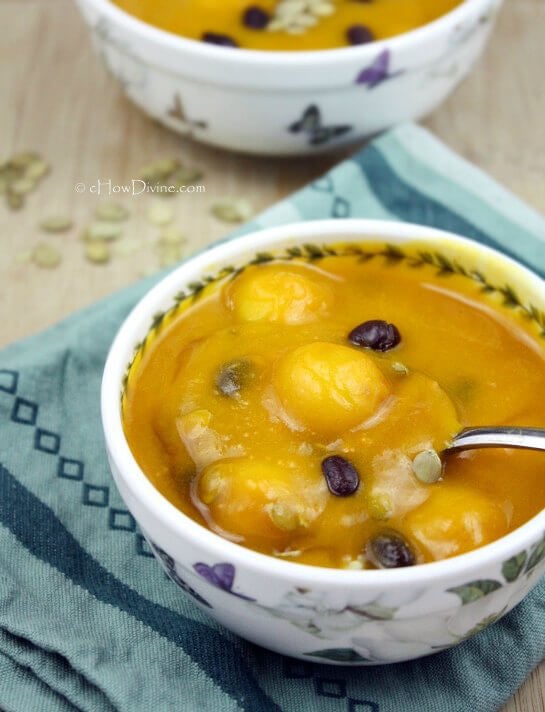
Tofu Kangjung (General Tso’s Tofu)
Here’s an interesting one that takes inspiration from American Chinese cuisine. This veganized classic uses tofu instead of chicken to keep our feathered friends happy.
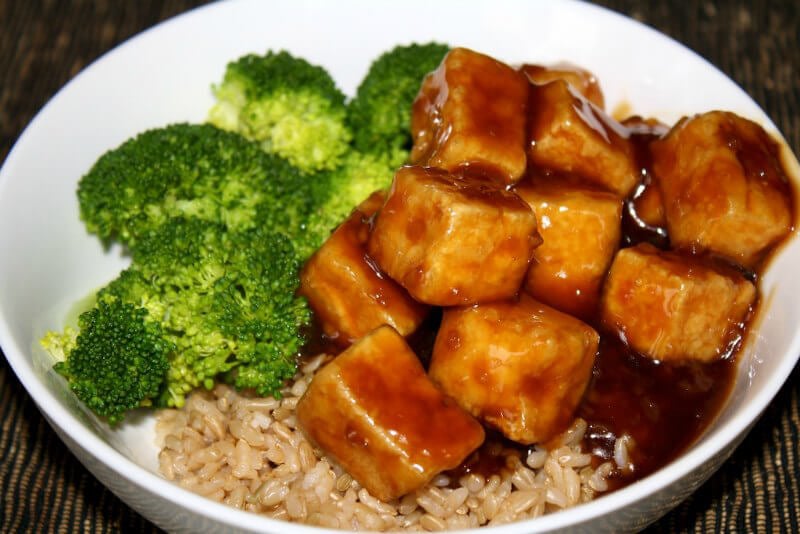
Baechu Kimchi (Napa Cabbage Kimchi)
What Korean food list would be complete without a kimchi recipe? Some kimchi is made with anchovy paste, but many store-bought brands are vegan. There are many different types of kimchi, but the most iconic is made with cabbage and hot chilis, then fermented underground for some time. Kimchi’s pungent flavor is distinctive but can round out any Korean meal.
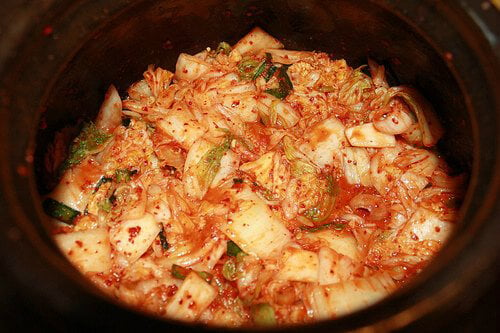
Text VEG to 73822 to get the latest vegan lifestyle tips, recipes, and urgent action alerts texted right to your phone.
Terms for automated texts/calls from PETA: https://peta.vg/txt. Text STOP to end, HELP for more info. Msg/data rates may apply. U.S. only.


